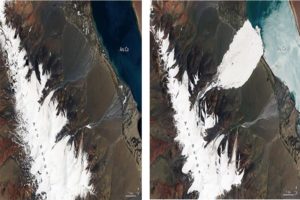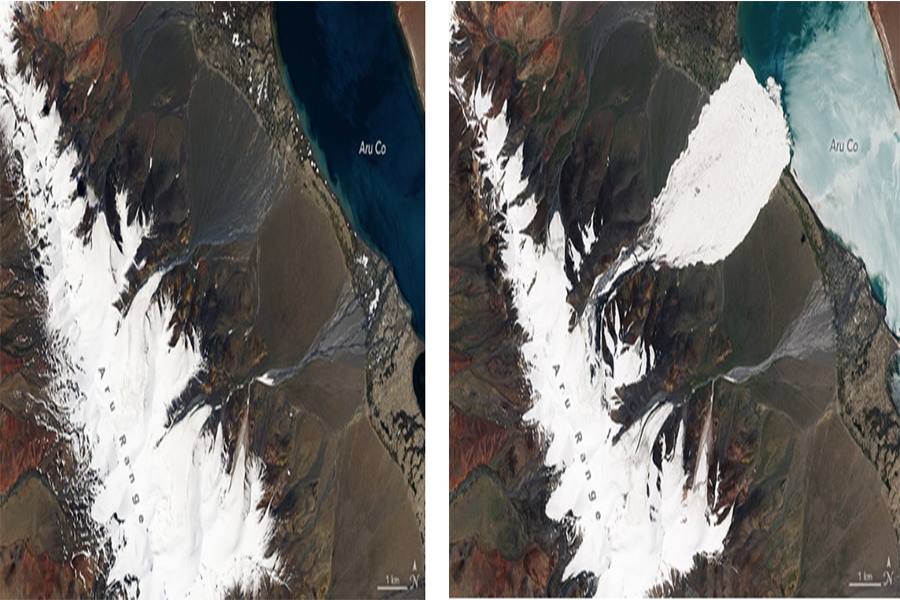Tibetan glaciers melting due to climate change
By Lobsang Tenchoe
DHARAMSALA, Dec 14: Global warming has likely caused the twin massive ice avalanches in the western Tibet, researchers suggest and warn that the disaster could become more frequent in the region.
The glaciers of the western Tibet have been stable for thousands of years. Avalanches, once unheard of, may soon become a thing of past courtesy of the climate change, huffingtonpost.in reported, citing findings of new research.
On July 17, an avalanche in Aru Range in the Tibetan region of Ngari buried an area of almost four square miles in debris up to 100 feet deep and killed nine herders along with their livestock; hundreds of sheep and yaks were killed. The area sits at an average elevation of 4,500 meters (about 14,800 feet).

Image- NASA
Unlike southern and eastern Tibet where glaciers have been melting at an accelerating rate, western Tibet has long remained a stable glacial region, but two months later, another massive avalanche hit a nearby glacier on Aru Range. Though they were no reports of casualty, the occurrence left the scientists and the locals in total dismay.
“That one such event should occur is remarkable; two is unprecedented,” geoscientist Dave Petley wrote in an October blog post.
Petley further remarked that Tibet is warming rapidly at an average of 0.4 degrees celsius a decade, twice the pace of global average and opined that ‘climate change’ is the likely cause of the two ice falls.
“The urbanization of Tibet by China after it occupied Tibet has caused the temperatures to increase and this coupled with the global warming has melted 50 percent of the glaciers in Tibet in the last fifty years,” Sikyong Lobsang Sangay, the political head of the Central Tibetan Administration said at the Halifax International Security Forum at Halifax, Nova Scotia in November.
A paper published last week in the Journal of Glaciology supports both Petley and Sikyong Sangay’s claim.
This places Tibet, the water tower of Asia, at a grave risk as the enduring rise of temperatures puts other glaciers in western Tibet vulnerable to collapse. “If the climate warming in the region is the primary cause of the Aru Glacier collapse, then it will not be the last one,” the researchers wrote.
Though the communist regime in Tibet is unlikely to own responsibility to the drastic climate change, Chinese scientists have acknowledged that climate change is a severe threat to the Tibetan plateau and warned that two-thirds of the glaciers on the plateau will disappear by 2050 as the plateau’s glaciers are melting at a staggering rate of 7 percent per year.




